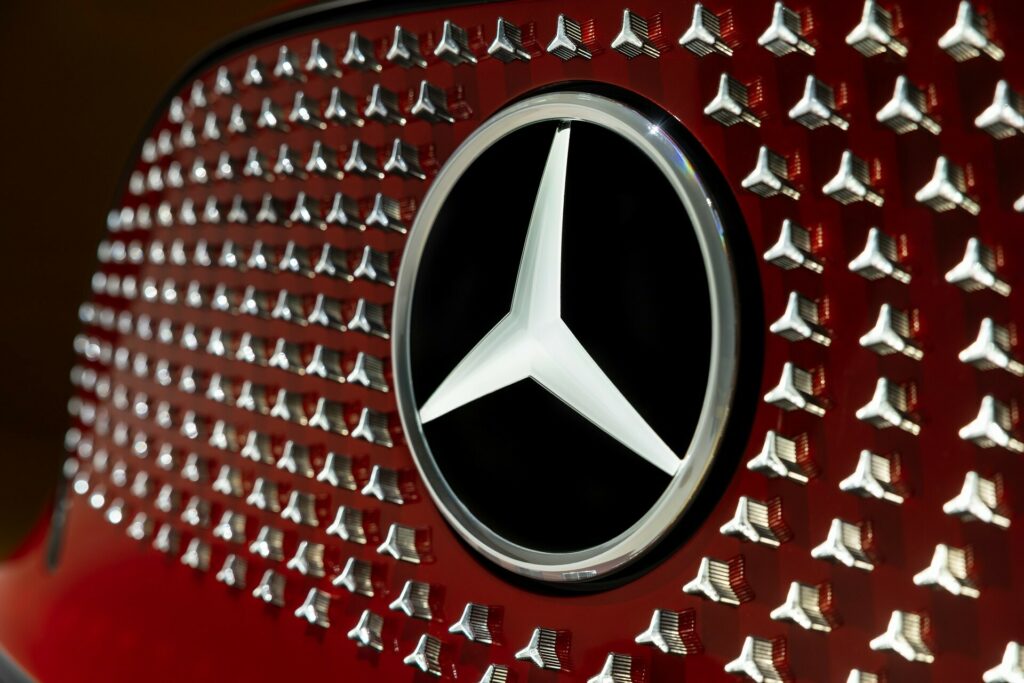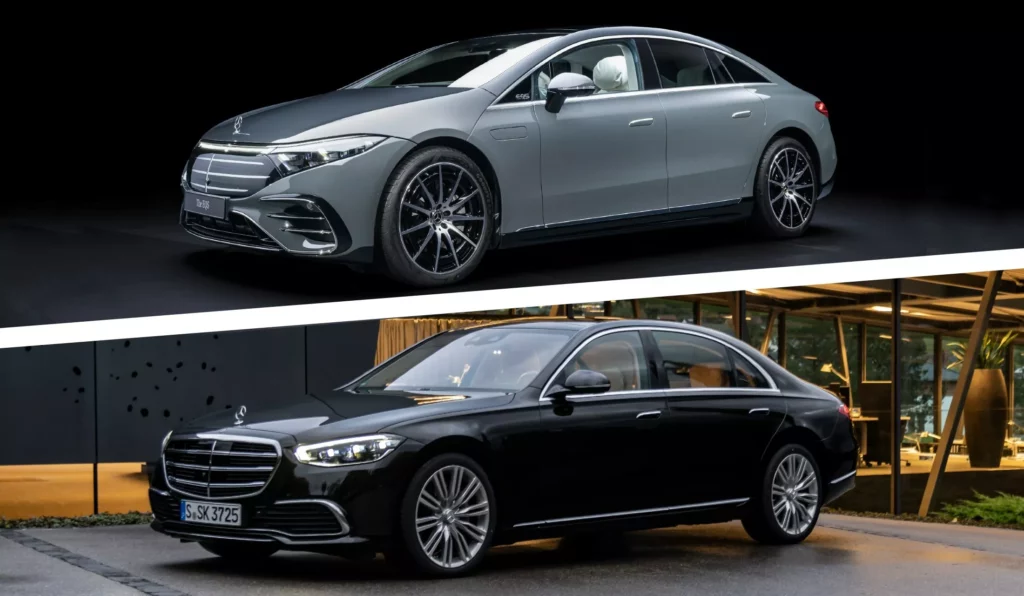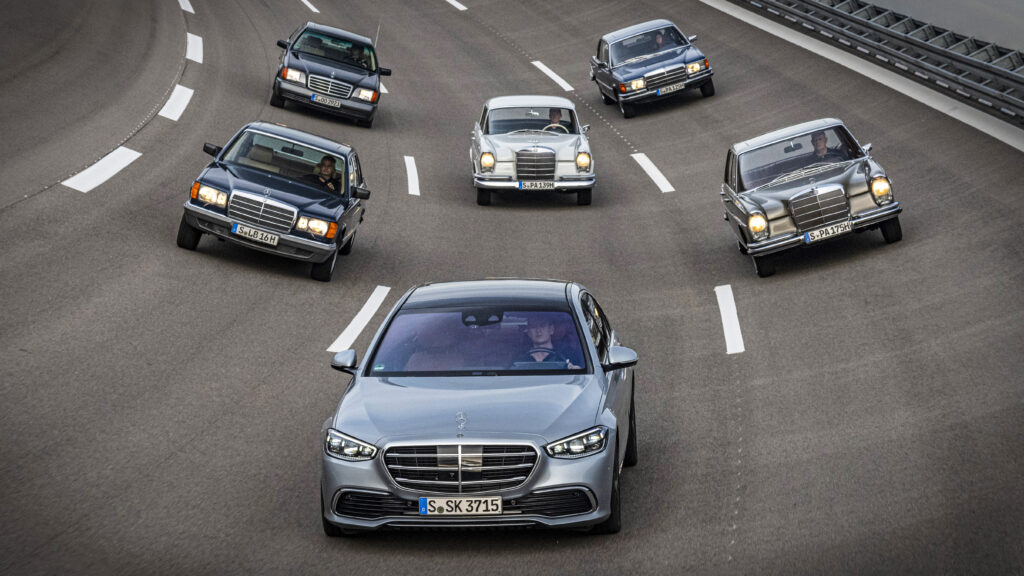- Mercedes wants to unify the S-Class and EQS flagships into a single model line in the future.
- The eight-gen S-Class is expected to arrive in 2030, offering both ICE and EV powertrain options.
- The EQS will benefit from significant updates in 2025, with a facelifted S-Class following in 2026.
Mercedes is reportedly planning to merge the S-Class and EQS sedans into a single model line, offering a choice between EV and ICE powertrain options well into the next decade. The next generation of the German flagship is expected to arrive in 2030, with the existing EQS and S-Class set to receive comprehensive updates in 2025 and 2026 respectively.
The dual nature of the future S-Class has been confirmed by the Mercedes-Benz CEO, Ola Kallenius, who said: “There will be two S-Classes in the future – ICE and electric.” The two versions are expected to adopt similar exterior and interior designs, although they will most likely ride on different architectures.
More: Electric Mercedes C-Class And GLC Confirmed For 2026
Despite earlier rumors about the cancellation of the MB.EA Large architecture, Kallenius said it remains under development. According to Autocar, the platform will underpin the fully electric S-Class, while the ICE-powered model will ride on an updated version of the current MRA (Modular Rear Architecture) underpinnings.
In terms of styling, earlier comments by design boss Robert Lesnik suggest that Mercedes’s future ICE and EV lineups will have a strong visual connection. This strategy was introduced with the updated G-Class, and sounds similar to what BMW did with the 5-Series/i5 and 7-Series/i7.

Besides the S-Class/EQS merger, an insider source suggests that Mercedes will likely follow the same path for the successor of the E-Class / EQS sedans. This would allow the automaker to benefit from the economy of scale, since the S-Class and E-Class lines have lots of things in common from a technical standpoint.
A change of heart for Mercedes’ future lineup was to be expected, as the company struggles meeting its EV sales targets, pushing them further into the future. More specifically, Mercedes hopes EVs to account for 50 percent of its sales mix by 2030 instead of the earlier target of 2025. In a similar context, Kallenius recently confirmed that the automaker will invest more on ICE powertrains, keeping them on sale for much longer than initially expected.
Upcoming Updates For The Current S-Class And EQS
The slow sales of the current S-Class and EQS, recently forced Mercedes to cut production at the Sindelfingen plant in Germany. Sales of the ICE-powered flagship recorded a 22 percent drop in the first half of 2024, while demand for the EV equivalent is not exactly earth-shattering. However, this could be solved with the forthcoming facelifts, set to make the models more desirable to buyers.

The Mercedes EQS (above) and the current S-Class (below)
The current generation of the S-Class (W223) has been around since 2020. Normally, Mercedes would have introduced a facelift in 2024, but the update has been pushed back to 2026. This is in line with the longer projected lifespan of the model that needs to stick around until the end of the decade.
The updated S-Class – already caught by our spy photographers – is expected to adopt redesigned front and rear ends, alongside more technology inside the cabin and more advanced autonomous driving capabilities. The powertrain lineup will likely be carried over, albeit with upgrades keeping them compatible with the stricter emission regulations.
More: 2026 Mercedes S-Class Spied With Supersized Grille And Starry Headlights
On the other hand, the fully electric EQS was originally introduced in 2021 and received mild updates in 2024. However, a more comprehensive facelift is expected in the second half of 2025, focusing on the technical side. The updated model will reportedly ride on an heavily revised version of the existing EVA2 architecture, improving in all aspects of electrification.
The new platform is said to adopt 800V technology (up from 400V), bringing faster charging capabilities. At the same time, a new battery chemistry will reportedly increase the driving range by 37 miles (60 km) to a maximum of 535 miles (860 km) between charges. Another advancement is expected to involve the electric powertrain, with the in-house developed eATS2.0 units and a two-speed gearbox replacing the existing Siemens Valeo e-motors and single-speed gearbox.





